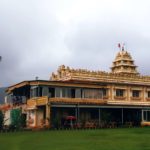Trekking in Pune
Pune, the land of the Marathas promises a lot of places to explore and is also known for its scenic picturesque landscapes for trekking.
From 20-150 km, you can get your hands on the richest medieval and ancient architecture you can ever imagine across Asia!
Here, I will give you a glimpse about the 5 famous trekking destinations that revolve around Pune.
Sinhagad A.K.A. Kondhana
This is the flagship fort of Pune. I have maybe climbed this famous fort around 50 times now. It is around 30 km from the centre of Pune. It offers easy trekking for the novice enthusiast.
Of course, the best time to visit is during the monsoons in July/August.
You will encounter many shacks along the route and many shops at the top.
This trek takes around 2 hours.
Along the way, you can refresh at the local shacks that offer limbu-sherbet, raw mango slices and mountain berries.
As you are ascending, and especially in the rainy season, keen observers are sure to notice the different levels of flora and fauna that go on changing.
This place offers more than just wonderful trekking: a full history of the Maratha-Mughal wars.
At the top, don’t forget to visit the famous Bengal monitor lizard (Varanus bengalensis) tomb who helped the Maratha army climb the precarious terrain.
Tikona Fort
Around 45 km from Pune in Kamshet (Maval), lies Tikona.
The terrain here, although less steep when compared with Sinhagad, is more slippery in nature.
This place also sees less commercial development, so make sure to carry water and all essential food with you.
It takes approximately 60 minutes to reach the top. Due to the slippery nature, it is advisable to not do this trek during the heavy rains.
There is a temple at the top with guards dressed in medieval outfits. Also, you can see many mysterious ‘meditation’ caves inside the fort.
The view from the top is spectacular and you can even see the Pavna Dam! This fort is also considered easy and is recommended for the beginner.
Purandar Fort
This popular fort is situated close to Saswad near Pune and about 50kms from Pune.
This fortress is among the strongest ever built. This auspicious fort marks the birthplace of Shambhaji Maharaj.
The oldest known reference to the Purandar dates back to the Yadava Era in the 11th century. After the defeat of the Yadavas by the Persian invaders, the fort and nearby jurisdiction fell into the Persian hands which further fortified it in 1350 A.D
Today, this fort is a hotspot for trekkers and paragliders. There is an army unit and an NCC station on the fort, where cadets are trained.
This brings some restrictions: no cameras or mobile phones allowed. You cannot set camp on the fort and the fort is accessible from 9am-5pm only.
The fort has two distinct levels. The lower altitude of Purandar is called the ‘machi’. North of this area is a tabletop where the cantonment and hospital were housed.
Don’t miss the statue of Murar Baji Deshpande on the fort. The difficulty level for this trek is medium with 2.5 hours to reach the top. Since there are fewer facilities to take rest, the winter season (December/January) is the best.
Lohagad Fort
This fort technically divides the basins of Indrayani and Pavna rivers. This fort has 4 successive entrances: The Ganesh Darwaja, the Narayan Darwaja, the Hanuman Darwaja and the Maha Darwaja.
Many water containers are scattered across the area with one with a natural spring.
This expansive fort is about 9 km from the Malavali railway station in Lonavala and about 52 km from Pune.
I found the route to be enjoyable, especially the photogenic scenery, lush green grass, cool mountain air, and the pleasant climate.
A variety of birds and insects can also be spotted in these hills, which makes it an ornithologist’s dream destination.
Raigad Fort
I have left the best for the very last! Raigad is a wondrous hill fortress, located in the Raigad district of Maharashtra.
This magnificent place lies around 130 km from Pune and it takes about 4 hours to reach and 2.5 hours to ascend.
It once served as the capital of Chhatrapati Shivaji,
The Great Maratha king, in 1674.
The main architecture, which lies today mostly in ruins, include the Queen’s Quarters, the Public Durbar, Watch Towers, Darwazas (gateways), etc.
The tomb of Shivaji Maharaj and his dog (Waghya) is situated near the avenue.
The ghats that lead to Raigad are very very scenic and full of waterfalls in the rainy season.
There are approximately 1500 steps leading to the fort, though today a rope-way also exists to reach the top. There lie alternative trails too through the jungle which involve climbing only about 650 steps.
The best part of the jungle exploration are the thick canopies which any wildlife lover would relish.
The things to see at the top: The Palakhi Darwaja, Mena Darwaja, Chhatrapati Shivaji Maharaj Statue, Hanuman Taake, Nagarkhana, Bazaar Peth and so on. From the bottom, no fortification can be seen. This made the fort invisible to any invading army.
Lastly, I would advise everybody to take a guide unless aware of Raigad history; they are pretty knowledgeable, not to mention witty!
All of the above treks are well suited for a one-day return trek. Nestled comfortably in the Sahyadri range, Pune has a lot to offer in terms of wilderness trails. If you are new to Pune, the above trails are best for getting that excitement that you may long desire, get to know history and see some fabulous medieval architecture!



